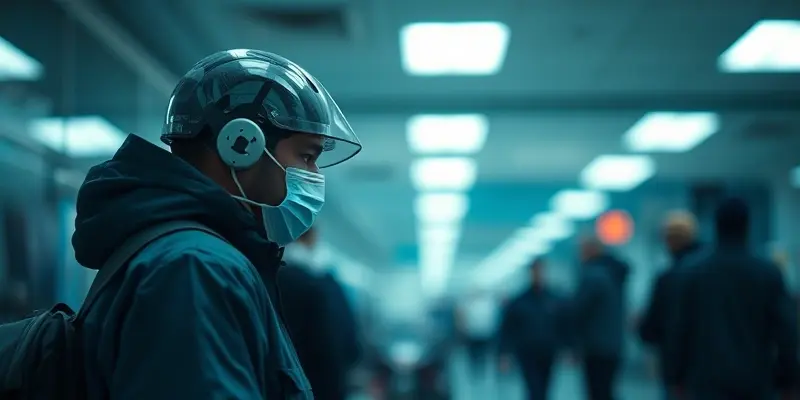Visualization for Recovery and Injury: The Athlete’s Secret Weapon
When it comes to sports, injury and recovery are often part of the journey. Whether you’re a gym newcomer, a seasoned athlete, or a health-forward amateur, bouncing back quickly—and smarter—matters. What if I told you there’s a powerful yet underused technique to heal faster, retain skills, and prevent future injuries? Let’s explore how visualization can become your secret weapon for recovery and sustained motivation.
What Is Visualization and Why Should You Care?
Visualization, or mental imagery, is more than just “positive thinking.” Imagine yourself rocking a perfect squat, feeling your hamstring repair itself, or seeing swelling melt away. Science confirms that regularly picturing these scenarios helps your brain and body activate healing, manage pain, and even preserve complex motor skills.
Think of it like rehearsing a performance in your mind’s theater: athletes use it to prepare for big games—now you can harness it for recovery, confidence, and return to form.
Visualization Techniques for Every Recovery Stage
Immediate Post-Injury: Calm & Heal
- Healing Imagery: Close your eyes for 5 minutes daily and picture your injury—ligaments mending, bruising fading, strength rebuilding.
- Relaxation Ritual: Pair healing images with deep breathing to reduce stress and boost optimism.
During Rehab: Stay Connected to Your Sport
- Movement Rehearsal: Mentally perform exercises or sport-specific drills, keeping those neural pathways sharp—even when you can’t move.
- Milestone Tracking: Visualize yourself progressing: each session is a step closer to your comeback.
Return to Sport: Confidence on Demand
- Scenario-Based Imagery: Before your first game back, visualize each move with confidence—imagine a pain-free sprint or flawless jump.
- Competition Routine: Walk through your pre-game rituals mentally, reinforcing readiness and reducing nerves.
Integrating Visualization with Physical Recovery
Visualization doesn’t replace the essentials—think of it as a force-multiplier. Here’s how to combine it with traditional recovery approaches:
- Nutrition: While protein, hydration, and anti-inflammatory foods fuel repair, visualization keeps you committed to those healthy choices.
- Rehab Gadgets: Whether using foam rollers or compression sleeves, imagine these tools “speeding up” and “amplifying” muscle recovery as you use them.
- Injury Prevention: Picture yourself warming up properly and moving with precision to boost confidence and prevent hesitation, a common cause of re-injury.
Tip: Schedule visualization beside your rehab or meal routine. Just 5–10 minutes can make a difference. For a structured approach, check out our injury recovery checklist to optimize your entire recovery process.
Real-World Benefits: More Than Mind Over Matter
Visualization isn’t “woo”—it works:
- Staying Motivated: When setbacks strike, mental imagery helps you feel part of your sport and see the bigger picture.
- Banishing Fear: Visualizing pain-free movement can rewire your brain’s response, reducing anxiety about re-injury.
- Building Confidence: Each time you “see” yourself succeed in rehab, you strengthen resolve and accelerate real-world progress.
Breakthrough moments—like an NBA player visualizing successful free throws during injury timeouts—show how mental practice sustains performance and identity.
Beginner’s Guide: How to Practice Visualization Today
Ready to try it? Here’s a simple routine for all levels:
- Find a Calm Spot: Sit or lie down. Take a few slow, deep breaths.
- Focus on an Injury or Skill: Close your eyes; see the area healing or yourself performing a key movement.
- Engage All Senses: Hear the sounds, feel the textures, recall the emotions tied to success.
- Positive Self-Talk: Remind yourself: “I am healing. I am returning stronger.”
- Repeat Daily: Mark small victories, no matter how minor—they add up!
Stick to it, and soon visualization will become as essential as stretching or hydration.
Conclusion: Make Visualization Your Recovery Ally
Incorporating visualization into your recovery isn’t just for the elite—it’s a low-risk, science-backed method to heal faster, prevent injuries, and stay motivated. Combined with good nutrition, rehab routines, and the right mindset, it turns setbacks into comebacks.
Start visualizing your next win today—and watch your mind and body work in harmony toward your strongest self.
By [Your Name], Fitness & Recovery Specialist | GymPulse Club

